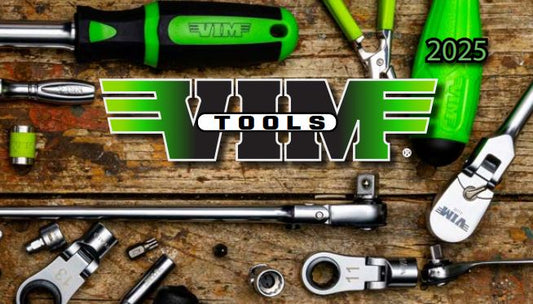Private Label vs OEM vs ODM: What’s Best for Your Automotive Tool Brand?
Introduction
Many first-time B2B buyers are not fully aware of the scope of services that factories actually offer. While terms like Private Label, OEM, and ODM have commonly accepted definitions, their real-world applications can vary—especially in the automotive repair tool industry, where production processes and customer expectations differ from other sectors.
Thinking of starting your own automotive tool brand or expanding your current product line? Choosing the right type of manufacturing partnership—Private Label, OEM, or ODM—can make or break your business.
With over 35 years of experience in the tool industry, we’ve helped many clients navigate these choices. In this article, we’ll break down the differences between these models and help you decide which one best fits your goals.
What Do Private label, ODM, OEM Actually Mean?
When sourcing products from Asian factories, three common collaboration models are often used: Private Label, OEM (Original Equipment Manufacturer), and ODM (Original Design Manufacturer). Below is a breakdown of what each model means, along with their advantages and disadvantages.
1) Private Label – Fast Branding with Low Commitment
Private Label means purchasing an existing product from the factory and applying your own branding—typically through printing or laser engraving—without modifying the product’s design or function.
Pros:
- Quick time to market since no product development is needed
- Low Minimum Order Quantity (MOQ): usually starts from 100–300 units; for non-standard specifications, MOQ starts from 500 units
- Ideal for new brands, market testing, or small-volume sales
Cons:
- No control over product design or features
- Same product may be sold by many other sellers, offering little brand differentiation

2) OEM (Original Equipment Manufacturer) – Full Customization
OEM means the customer provides the product design or detailed specifications, and the factory produces the item based on those requirements.
Pros:
- Complete design control over features, specifications, and appearance
- Unique product development helps avoid price wars and creates strong brand identity
Cons:
- Higher development costs and complexity
- Design discussions, prototyping, material selection, performance standards (torque, material, usage environment), and international certifications (GS, VDE, etc.) are required
- Mold development starts at around US$8,000, depending on size and complexity
- MOQ typically starts at 3,000 units
- Long development timeline: minimum 6 months from concept to mass production
- Suitable for brands with stable sales channels and long-term strategy
3) ODM (Original Design Manufacturer) – Semi-Custom with Speed
ODM means the factory has developed a product that can be sold under your brand, with limited options for customization, such as color, packaging, or accessory combinations.
Pros:
- Faster to market compared to OEM since core product design is already complete
- Partial customization (e.g., handle color, box style, packaging) allows branding at a lower cost
- A good balance between speed and customization for businesses looking to build unique products without full OEM investment
Cons:
- Product functionality and structure cannot be fully changed
- Any appearance or packaging changes require factory approval and are subject to MOQs
- Customization typically starts at 500–1,000 units
Summary : Private Label vs OEM vs ODM
| Feature | Private Label | OEM | ODM |
| Who designs the product? | Factory | Customer or Customer + Factory | Factory |
| Customization Level | Non or Branding only (logo/print) |
Full customization (design, specs, certifications) | Partial customization (Normally appearance, packaging) |
| MOQ | 100–300 units (500+ for non-standard items) | 3,000+ units | 500–1,000 +units |
| Development Time | 1 month | 6+ months | 2+ months |
| Cost | Low | High (includes mold cost) | Moderate |
| Pros | Quick launch, low risk | Unique design, market differentiation | Faster than OEM, brand identity with budget control |
| Cons | No uniqueness, no customization | High cost, long lead time, complex development | Limited changes, depends on factory flexibility |
Which Is Best for You?
- Startups / Amazon sellers: Start with Private Label or ODM for low risk and faster turnaround.
- Established brands: Invest in OEM to create unique, high-value products.
- Distributors: Use a combination of all three based on customer and market needs.
How We Help
As a Taiwan-based trading company with over 35 years of sourcing experience, we help you:
- Choose the right model based on your brand goals.
- Match with suitable, vetted factories.
- Assist with sampling, branding, packaging, QC, and logistics.
- Streamline your sourcing so you can focus on growing your brand.
Ready to Build Your Tool Brand?
We’re here to help you take the next step.
Contact us today for a free consultation and a custom quote tailored to your brand needs.
Email: info@projen.com.tw




